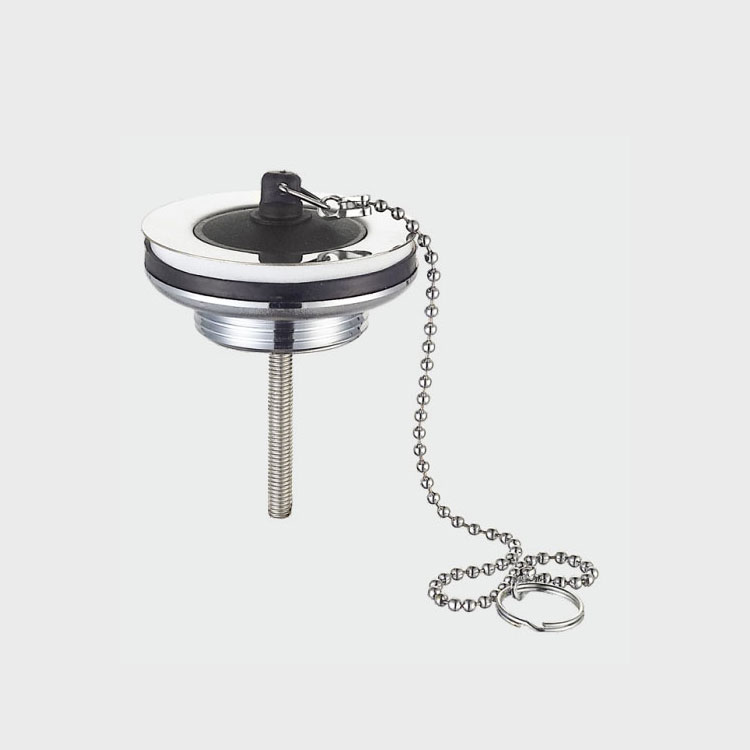A Complete Guide to Basin Waste: Types, Functions, and Installation
2025-04-03
Basin waste is an essential yet often overlooked component of bathroom sinks. It plays a crucial role in controlling water drainage and preventing blockages. Whether you are renovating your bathroom or replacing an old sink, understanding basin waste types and functions can help you make the right choice. In this blog, we will explore everything you need to know about basin waste, including its types, benefits, and installation process.
What Is Basin Waste?
Basin waste is the plumbing component that allows water to drain from the sink while preventing debris from clogging the pipes. It connects the sink to the drainage system and often includes a plug or stopper mechanism to retain or release water as needed.
Types of Basin Waste
There are several types of basin waste, each designed for different sink styles and user preferences. Here are the most common options:
1. Click Clack Waste
Also known as a push-button waste, this type operates with a simple press. Press once to close the waste and fill the basin with water, then press again to release the water. It is a modern and convenient choice for contemporary bathrooms.
2. Pop-Up Waste
This type is controlled by a lever or rod positioned behind the faucet. When the lever is lifted, the waste opens to release water. Lowering the lever closes the waste, allowing water to fill the basin. This design is commonly found in traditional bathroom settings.
3. Flip-Top Waste
A flip-top waste features a rotating disc that can be manually turned to open or close the drainage. It provides a sleek, minimalist look and is easy to operate.
4. Chain and Plug Waste
This is the most traditional type, consisting of a rubber plug attached to a metal chain. Pulling the chain lifts the plug to release water, while placing it back seals the basin. It is a cost-effective option, though it may not be as stylish as other modern alternatives.
5. Free-Flow Waste
Designed for basins without an overflow, a free-flow waste remains open at all times, preventing water from collecting in the sink. It is ideal for public restrooms or commercial settings where overflow prevention is important.
Benefits of Choosing the Right Basin Waste
Selecting the appropriate basin waste offers several advantages:
- Prevents Blockages: A well-designed waste system helps trap debris, reducing the risk of clogged pipes.
- Enhances Aesthetics: The right waste complements the overall sink design, improving the bathroom's visual appeal.
- Improves Functionality: Different waste types offer varying levels of convenience, ensuring ease of use.
- Increases Durability: Choosing high-quality materials, such as brass or stainless steel, ensures longevity and resistance to corrosion.
How to Install a Basin Waste
Installing a basin waste can be a straightforward process if you follow the right steps. Here is a general guide:
1. Remove the Old Basin Waste
If replacing an existing waste, start by unscrewing and removing the old waste fitting. You may need a wrench or pliers to loosen it.
2. Prepare the New Basin Waste
Apply a silicone sealant or plumber’s putty around the waste flange to create a watertight seal. This prevents leaks when water flows through the waste.
3. Insert the Waste into the Basin
Place the waste through the basin’s drainage hole, ensuring it sits securely in place.
4. Secure the Waste from Below
Under the sink, attach the waste nut and washer to hold the waste in position. Tighten it firmly but avoid over-tightening, which may damage the basin.
5. Connect the Waste Pipe
Attach the waste pipe to the basin waste, ensuring it aligns properly with the plumbing system. If necessary, adjust the pipe to prevent leaks.
6. Test for Leaks
Run water into the sink and check for any leaks around the waste fitting. If you notice water seeping out, reapply sealant and tighten the connections.
Maintenance Tips for Long-Lasting Basin Waste
To keep your basin waste in good condition, follow these simple maintenance tips:
- Clean the waste regularly to remove hair, soap scum, and debris.
- Avoid using harsh chemicals that can corrode metal components.
- Check for leaks periodically and tighten any loose fittings.
- If the waste becomes clogged, use a plunger or drain cleaner to clear the blockage.
Conclusion
Basin waste is an essential component of any sink, providing efficient drainage while enhancing the bathroom’s functionality and style. Whether you choose a click-clack, pop-up, flip-top, or chain and plug waste, selecting the right type ensures convenience and durability. Proper installation and maintenance will keep your basin waste performing effectively for years to come. If you are upgrading your bathroom, take the time to choose a high-quality basin waste that suits your needs.



